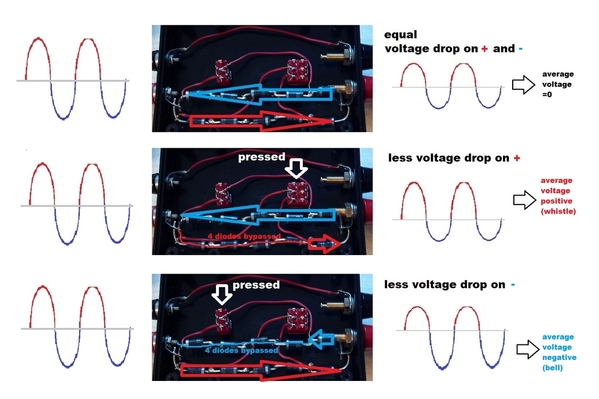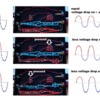...So current follows 2 paths when the first switch is open? Not just the one through the single diode?
I believe when you say a switch is "open" that you mean it is pressed "on" and thereby electrically shorting its two terminals? I get the analogy that an "open" door lets air flow in and a "closed" door blocks air flow. But in the electrical world, an "open" switch means current is NOT flowing. Perhaps just semantics; in any case see if this helps:

In all 3 cases (normal, whistle, bell) current flows in BOTH directions. When the incoming voltage is positive (RED), current flows thru the lower path of diode(s). When the incoming voltage is negative (BLUE), current flows thru the upper path of diode(s).
As GRJ says, in addition to understanding where the currrent is flowing, the key to the operation of this type of controller is that a diode reduces the voltage as it passes the current. It's kind of like a 3/4 Volt tax. Pressing one or the other button essentially bypasses 4 of the diodes leaving just 1 diode in that direction. The other direction still has 5 diodes. So this offsets the average voltage, and of course this offset voltage is what the engine detects to trigger its whistle/bell.
As mentioned in an earlier post, one artifact of using this method is in normal operation (neither button pressed), the 10 diodes (5 in each direction) are nevertheless imposing the voltage tax and there is reduced AC voltage to the engine. A valid criticism of this method is that those diodes are burning power in normal operation; modern controllers use different techniques so as not to waste power. But considering the simplicity and cost of this method, it's a reasonable tradeoff all things considered.










